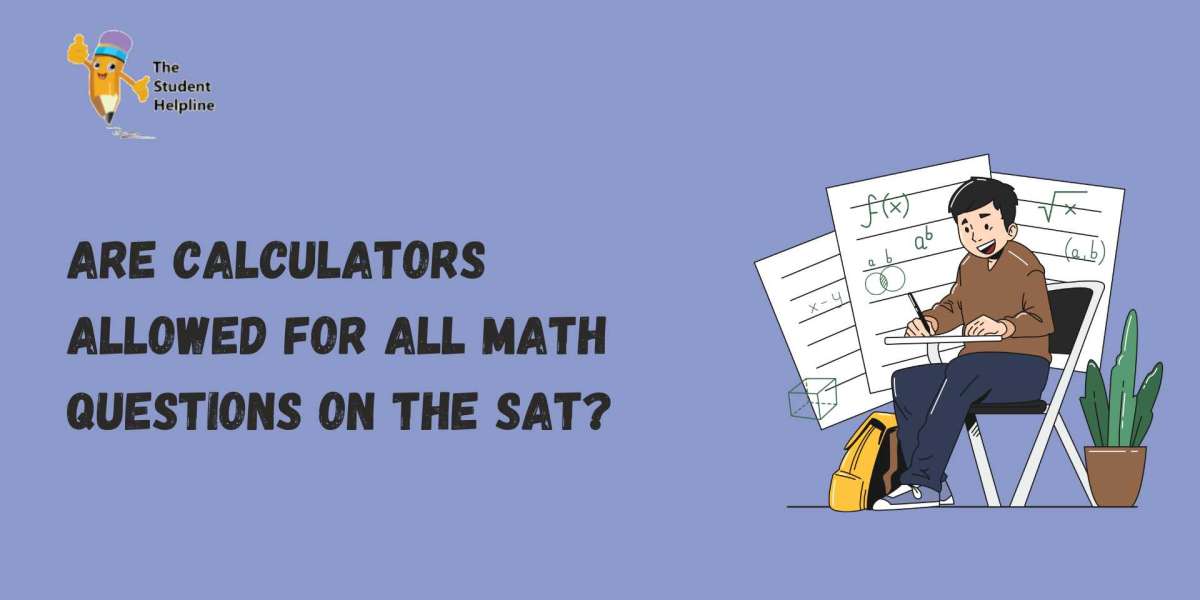The SAT exam is a crucial milestone for students aspiring to pursue higher education abroad. One of the most common queries students have when preparing for the SAT exam syllabus is whether calculators are permitted for all math questions. This question often stems from the varying rules across different standardized tests. Understanding the rules regarding calculator usage is essential to strategically prepare for the math section of the SAT exam.
In this article, we’ll provide a detailed explanation of the SAT’s calculator policy and its implications for students, particularly those studying the SAT exam syllabus for Indian students. We’ll also discuss how students can optimize their preparation for the SAT math section based on the calculator rules.
Understanding the SAT Math Section
The SAT math section is designed to assess a student’s proficiency in mathematical concepts typically covered in high school. The math section is divided into two distinct parts:
Math Test - No Calculator
Math Test - Calculator Allowed
This division reflects the College Board’s objective of testing not only computational skills but also a student’s ability to solve problems using logic and reasoning. Therefore, the SAT syllabus includes both calculator-permitted and non-calculator segments to ensure a comprehensive evaluation of mathematical abilities.
Topics Covered in the SAT Math Section
The syllabus of SAT math can be broadly categorized into the following areas:
Heart of Algebra: Linear equations, inequalities, and functions.
Problem Solving and Data Analysis: Ratios, percentages, data interpretation, and statistics.
Passport to Advanced Math: Quadratic equations, polynomial functions, and non-linear expressions.
Additional Topics in Math: Geometry, trigonometry, and complex numbers.
Familiarizing yourself with these topics is vital for success in the math section.
SAT Calculator Policy
The SAT exam syllabus explicitly divides the math section into calculator-allowed and no-calculator parts. Let’s break down the specifics of this policy:
Math Test - No Calculator
Number of Questions: This section includes 20 questions.
Time Limit: Students are given 25 minutes to complete this part.
Content Focus: The no-calculator section primarily focuses on algebraic manipulations, problem-solving, and logical reasoning.
Why No Calculator?
The rationale behind the no-calculator section is to evaluate a student’s ability to:
Perform basic computations accurately.
Solve problems using mental math and logical strategies.
Demonstrate mastery of mathematical concepts without relying on technology.
Math Test - Calculator Allowed
Number of Questions: This section consists of 38 questions.
Time Limit: Students have 55 minutes to complete this part.
Content Focus: The calculator-allowed section covers a broader range of topics, including data analysis and advanced algebra.
Which Calculators Are Permitted?
Not all calculators are allowed during the SAT. Approved calculators include:
Scientific calculators
Graphing calculators
Four-function calculators (although these are not recommended due to their limited functionality)
It is crucial to ensure that your calculator complies with the College Board’s guidelines. Smart devices, including smartphones and laptops, are strictly prohibited.
Implications of the Calculator Policy for SAT Preparation
Understanding the calculator policy can significantly impact how students approach their preparation for the SAT exam syllabus. Here are some practical tips to help you prepare effectively:
1. Master Mental Math and Manual Computations
For the no-calculator section, focus on improving your mental math skills and practicing manual calculations. This will help you solve problems faster and more accurately without a calculator.
2. Familiarize Yourself with Your Calculator
If you plan to use a graphing or scientific calculator, ensure that you are comfortable with its functions. Practice solving SAT-style questions using your calculator to avoid wasting time during the exam.
3. Focus on Key Topics
Prioritize topics frequently tested in the syllabus of SAT, such as algebra and problem-solving. Use official practice tests to identify areas that need improvement.
4. Take Timed Practice Tests
Simulating the actual test environment can help you manage your time effectively. Practice solving both calculator and no-calculator sections within the given time limits.
5. Avoid Over-Reliance on Calculators
While calculators are useful, over-reliance can slow you down in the no-calculator section. Strive to maintain a balance between calculator proficiency and mental math skills.
Benefits of the SAT’s Calculator Policy
The calculator policy is not just a test restriction; it’s a tool to enhance your overall mathematical abilities. Here are some benefits:
Builds Problem-Solving Skills: Tackling questions without a calculator strengthens logical thinking.
Encourages Efficiency: Students learn to identify the quickest method to solve a problem, whether by manual computation or calculator use.
Reduces Over-Reliance on Technology: Developing mental math skills helps students approach problems with confidence, even in calculator-restricted scenarios.
SAT Exam Syllabus for Indian Students: Special Considerations
Indian students often have a strong foundation in mathematics due to rigorous school curriculums. However, preparing for the SAT math section requires familiarity with the specific format and question types outlined in the SAT exam syllabus. Here are some considerations:
Differences in Syllabus
Indian curricula often emphasize advanced mathematics, while the SAT focuses on practical application and problem-solving.
Topics such as data interpretation and real-world applications may be less familiar to Indian students, requiring additional practice.
Time Management
Indian students accustomed to lengthy problem-solving techniques should adapt to the SAT’s time constraints by practicing efficient strategies.
Resources for Preparation
Leverage official SAT practice materials and focus on areas that align with the SAT exam syllabus for indian students but may differ from Indian curriculums. Consider enrolling in SAT preparation courses tailored for Indian students.
Conclusion
The SAT’s calculator policy is an integral part of its design, reflecting the test’s emphasis on both computational and logical reasoning skills. While calculators are allowed for certain sections, the no-calculator section challenges students to rely on their core mathematical abilities. By understanding and preparing for this policy, students can maximize their performance and excel in the math section.
For Indian students, aligning their preparation with the SAT exam syllabus is key to overcoming the unique challenges posed by the test. With diligent practice and strategic preparation, mastering the SAT math section—calculator or no calculator—is well within reach.


